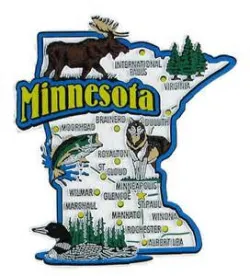The Minnesota Legislature is currently considering legislation prohibiting the presence of intentionally added PFAS in a variety of consumer products by 2026 and in all consumer products by 2032.
What Are PFAS?
The acronym “PFAS” refers to “perfluoroalkyl and polyfluoroalkyl substances,” which can include a vast range of manmade organic compounds containing chains of carbon atoms in which carbon-fluorine bonds have replaced most or all of the carbon-hydrogen bonds.
PFAS were developed because of their water- and oil-repellant, surfactant, “non-stick,” or friction-reducing properties. The highly general term “PFAS” can refer to both non-polymeric compounds (small molecules, including those that may be chemically and/or biologically active) and fluoropolymers (generally inert plastics and elastomers).
Proposed Legislation
Under the proposed legislation, the manufacturer of any product that contains intentionally added PFAS and is sold, offered for sale, or distributed in Minnesota would be required to submit to the Commissioner of the Pollution Control Agency no later than January 1, 2026, information on the product, including a brief description and numeric product code, the purpose for which PFAS was used in the product or any of its components, the quantity and CAS no. (a substance-specific identifier) of each PFAS used, and the contact information of the manufacturer. The Commissioner may grant an extension to a manufacturer if more time is needed for preparing the submission. If an unreported product is suspected of containing intentionally added PFAS, the Commissioner may require the manufacturer to have the product tested and to report the results within 30 days.
“Product” is defined as “an item manufactured, assembled, packaged, or otherwise prepared for sale to consumers, including but not limited to its product components, sold or distributed for personal, residential, commercial, or industrial use, including for use in making other products.”
“Intentionally added” is defined as “deliberately added during the manufacture of a product where the continued presence of PFAS is desired in the final product or one of the product's components to perform a specific function.”
The sale, offering for sale, or distribution of any product on the following list that contains intentionally added PFAS would be prohibited one year earlier, by January 1, 2025:
-
Carpets and rugs
-
Cleaning products
-
Cookware (including durable food and beverage serving or storage items)
-
Cosmetics (including personal care products)
-
Dental floss
-
Fabric treatments
-
Juvenile products (those intended for infants and children under 12 years of age)
-
Menstruation products
-
Textile furnishings (including draperies, bedding, and towels)
-
Ski wax
-
Upholstered furniture
Further, the prohibition would eventually apply to all products as of January 1, 2032, unless the Commissioner had determined that the use of PFAS was currently unavoidable.
This legislation would not apply to:
-
Products for which federal law governs the presence of PFAS while preempting state authority.
-
Products for which PFAS content is already regulated under sections 325F.072 (firefighting foam) or 325F.075 (all types of food packaging) of the Minnesota Statutes.
-
Sale or resale of used products.
Reactions to the Proposed Legislation
Although some commenters support the proposed legislation, many, including numerous trade associations, have submitted critical comments to the Chair and members of the Minnesota House Environment and Natural Resources Finance and Policy Committee. Among their chief concerns are the following:
-
The treatment of PFAS as a single class of chemicals for regulatory purposes. One alternative proposal is that PFAS chemicals be assigned to a limited number of categories based on their chemical structures and the known chemical, toxicological, and environmental properties associated with those structures.
-
The deadline for reporting, given the complex supply chains of some products (e.g., electronics, automobiles) with possibly thousands of components involving multiple global supply chains, and the challenges in getting the necessary information from every component manufacturer around the world.
-
The lack of protection for trade secrets and intellectual property.
-
The possibility that the process required to successfully claim an “unavoidable use” for a given PFAS in a given type of product could be lengthy and highly challenging.
-
The fact that state-level mandates unnecessarily conflict with or duplicate federal (EPA) efforts, and add to a patchwork of regulations that may greatly hinder the performance of businesses that operate nationally.



 />i
/>i
